The allure of Ancient Greece is not merely confined to its epic tales of heroes, groundbreaking philosophies, or influential political ideologies. It permeates an equally significant domain – the sphere of art – where artists wielded chisels and brushes to breathe life into marble and clay.
These Ancient Greek artists etched narratives, myths, and ideals into these mediums, creating timeless pieces that have continued to inspire for centuries. In their studios filled with dust and dreams, these artists formed the backbone of Greek artistic expression, playing a pivotal role in shaping Western aesthetics.
Table of Contents
- Ancient Greek Artists And Their Notable Legacy And Works
- The Life Of An Artist In Ancient Greece
- Watch Our Short Stories About 6 Notable Ancient Greek Artists Below!
- Frequently Asked Questions
- Related Questions
Ancient Greek Artists And Their Notable Legacy And Works
The profound legacy of Ancient Greece extends beyond philosophy and governance to a realm that continues to captivate the modern imagination – the realm of art. Ancient Greece, the cradle of classical art, produced many artists whose innovative techniques, grand themes, and exquisite craftsmanship shaped the aesthetic sensibilities of the Western world.
Read on as we will introduce you to some of the most celebrated artists of Ancient Greece, such as Pheidias, Skopas, Praxiteles, Lysippos, Exekias, and Euphronios, drawing upon ancient texts and inscriptions that have preserved their names and achievements over millennia.
Notable Sculptors And Their Works
Pheidias (circa 480-430 BC)
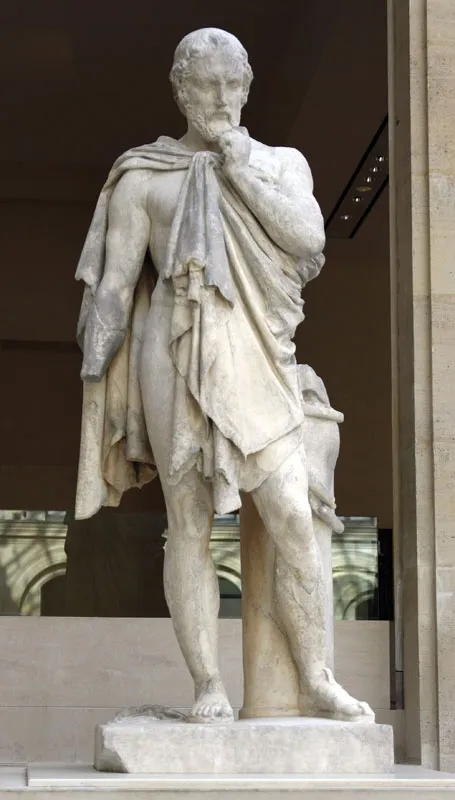
Deemed the greatest sculptor of classical Greece, Pheidias is best known for his monumental chryselephantine (gold and ivory) statues of Zeus at Olympia and Athena Parthenos at the Parthenon. His ability to convey divine grandeur and humanity simultaneously marked a revolutionary step in Greek art.
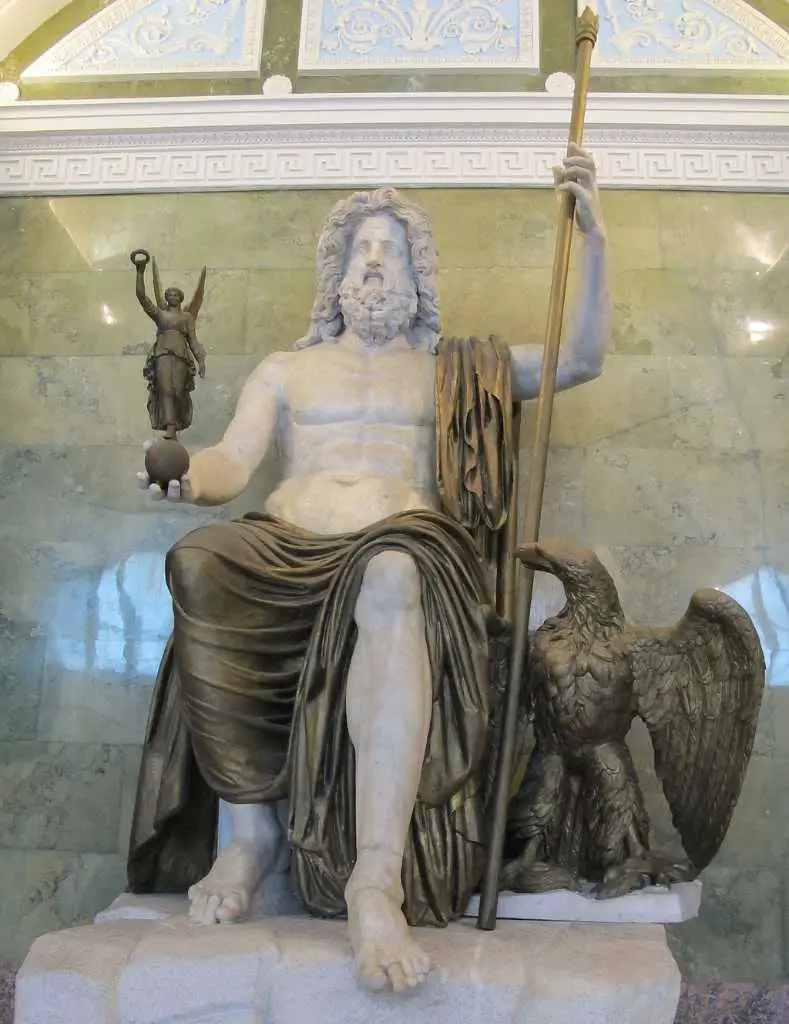

Skopas (circa 395-350 BC)
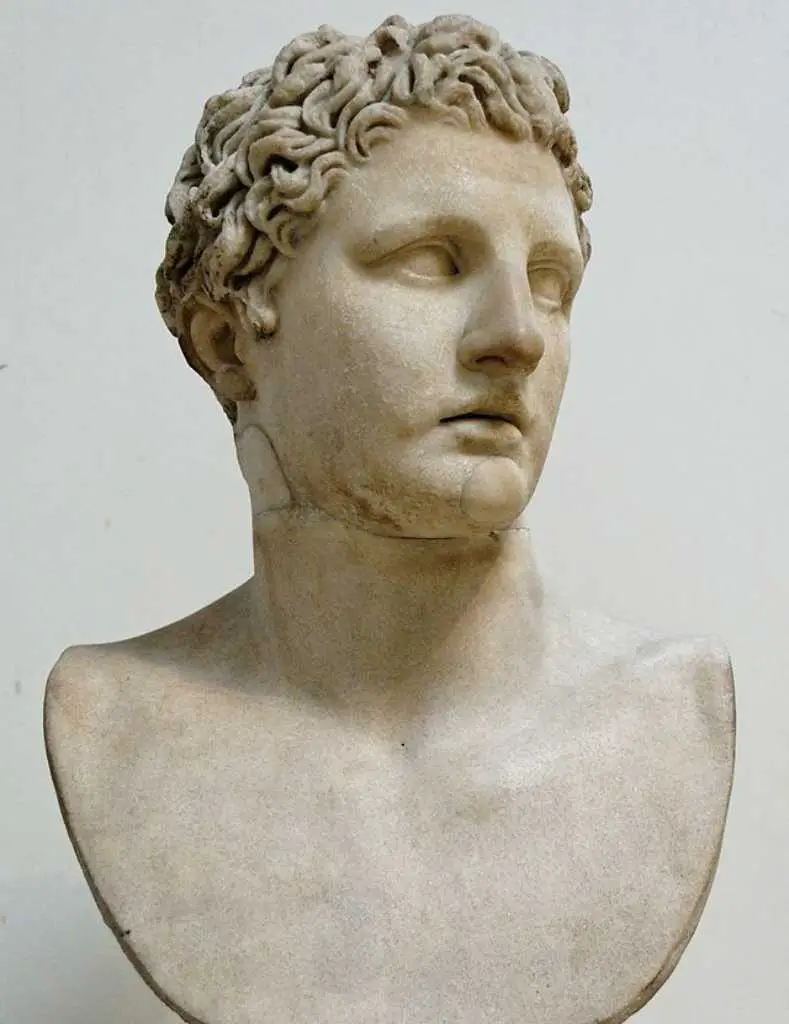

A central figure of the late classical period, Skopas is noted for his expressive and dramatic style. His significant works include the Mausoleum of Halicarnassus, one of the Seven Wonders of the Ancient World.
Praxiteles (circa 395-330 BC)
Praxiteles introduced marble for sculpting and was renowned for his delicate portrayals of the human form and his representations of the gods.
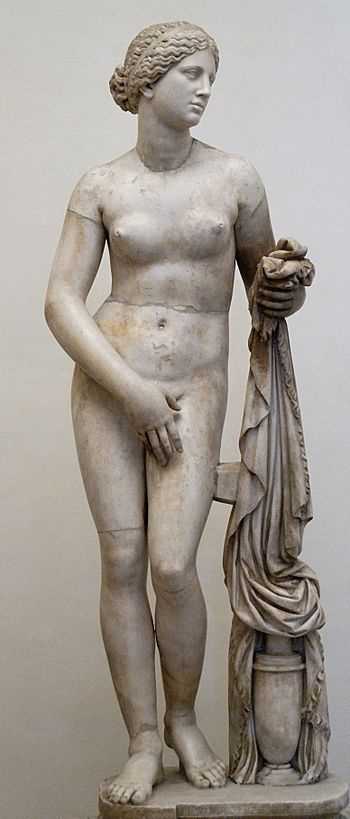
His most famous statue, the Aphrodite of Cnidus, was Greek’s first life-size female nude.
Lysippos (circa 390-305 BC)
The court sculptor of Alexander the Great, Lysippos, was instrumental in establishing the visual image of the legendary ruler. He pioneered a new canon of proportions, making bodies leaner and faces more expressive. His most famous work is the bronze statue of Apoxyomenos (the Scraper).
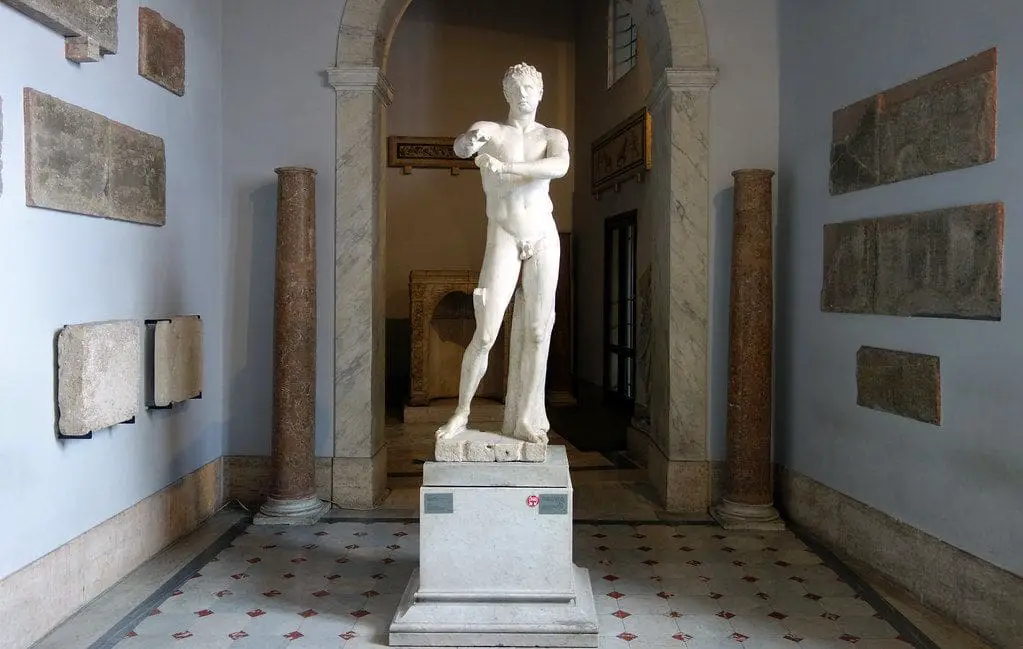
Prominent Vase Painters And Their Works
Exekias (circa 545-530 BC)
A master of black-figure pottery, Exekias was known for his meticulous detail, dramatic presentations, and innovative compositions. His most notable work is the amphora depicting Achilles and Ajax playing a dice game.
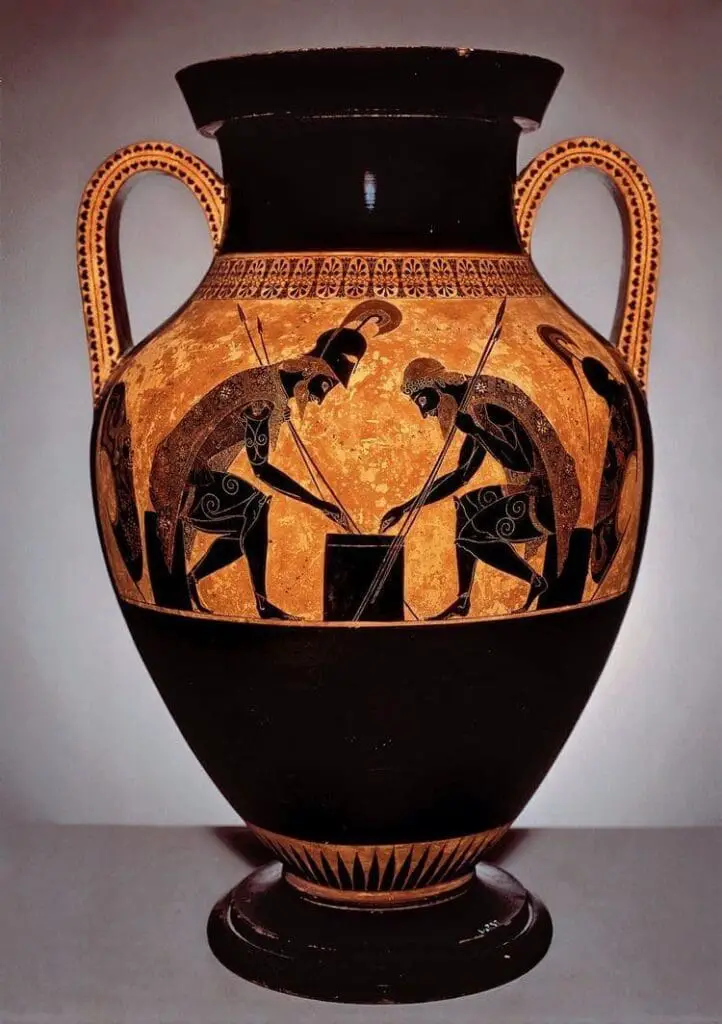
Euphronios (circa 520-470 BC)
As a pioneer of red-figure pottery, Euphronios demonstrated an exceptional understanding of human anatomy. His most famous work is the Sarpedon Krater, a large bowl used for mixing wine and water, which depicts the death of Sarpedon, a hero from the Trojan War.

The Life Of An Artist In Ancient Greece
Societal, economic, and cultural factors influenced the status and life of artists in Ancient Greece. Artists, sculptors, or vase painters were considered artisans, similar to carpenters or metalworkers.
They often belonged to guilds, working in workshops with apprentices. Art was seen as a practical rather than a creative endeavor, and artists typically learned their craft from a master.
Although not regarded as celebrities, successful artists could gain substantial wealth and recognition, sometimes commissioned by city-states to create monumental works. They were frequently sponsored by political and social elite patrons, who used art to demonstrate their wealth and status.
In terms of artistic freedom, artists were expected to adhere to accepted norms and conventions. However, the Classical period saw increased exploration and innovation as artists like Praxiteles and Lysippos broke traditional boundaries and redefined aesthetic standards.
The function of art in Ancient Greek society was primarily public and religious. Artworks were often commissioned for temples or public spaces and used to honor the gods or commemorate significant events.
Therefore, many works revolved around mythological themes or depicted athletes, gods, and heroes. An artist’s skill was judged based on his ability to represent these themes accurately and beautifully.
The art of Ancient Greece has left an enduring legacy that continues to influence modern artistic thought and practice. From monumental sculptures to intricate vase paintings, the works of Greek artists reflect society’s deep reverence for beauty, order, and humanism.
The artists mentioned – Pheidias, Skopas, Praxiteles, Lysippos, Exekias, and Euphronios – stand as shining exemplars of Greek artistry. Through their innovative techniques and masterful representations, they pushed the boundaries of their respective crafts, creating works that continue to captivate audiences today.
Though practical, being an artist in Ancient Greece was a significant role embedded in the sociocultural fabric of society. Their work, aligned with societal norms and religious traditions, served as a vital medium for public and private expressions, immortalizing the grandeur of gods, the feats of heroes, and the events that shaped Greek history.
As we marvel at the art of Ancient Greece, we are invited not merely to appreciate its aesthetic virtues but also to understand its rich context – a testament to a civilization that saw beauty as an integral part of its identity and existence.
Watch Our Short Stories About 6 Notable Ancient Greek Artists Below!
Anita Louise Art is dedicated to art education, great artists, and inspiring others to find and create their art. We love art that uplifts and inspires. #ArtToMakeYouSmile! #ArtToMakeYouHappy!
If you are interested to see any of my art, you can find out more by clicking here. If you are interested in what inspires me and my paintings, you can discover more by clicking here.
We have a free newsletter and would love you to be part of our community; you can subscribe to the newsletter by clicking here. If you have any questions, I would be happy to talk to you. You can reach me, Anita, by clicking here.
Subscribe to our Anita Louise Art YouTube Channel with great videos and information by clicking here.
Join us for our podcast “5 Minutes With Art.” Spend just 5 minutes a week with us to discover and learn about great art and artists. You can find out more about our podcast by clicking here.
Frequently Asked Questions
Who were the famous artists of ancient Greece?
Some famous artists of ancient Greece include Phidias, Praxiteles, Myron, Polykleitos, and Apelles.
What were the main materials used by ancient Greek artists?
Ancient Greek artists primarily used materials such as marble, clay, bronze, and terracotta for their sculptures and pottery.
What types of art did ancient Greek artists create?
Ancient Greek artists created various forms of art, including sculpture, pottery, painting, and architecture.
How did ancient Greek artists depict human figures in their artwork?
Ancient Greek artists focused on capturing the idealized human form in their artwork, emphasizing proportion, harmony, and balance.
What themes and narratives did ancient Greek artists often depict in their artwork?
Ancient Greek artists frequently depicted mythological narratives, scenes from daily life, heroic figures, and gods and goddesses from Greek mythology.
What role did ancient Greek artists play in shaping Western aesthetics?
Ancient Greek artists played a significant role in shaping Western aesthetics by establishing principles of beauty, proportion, and naturalism that influenced subsequent artistic traditions.
How were ancient Greek sculptures and pottery used in society?
Ancient Greek sculptures and pottery were used for various purposes, including religious rituals, honoring the gods, decorating public spaces, and as offerings in sanctuaries.
What techniques did ancient Greek artists use in their sculptures?
Ancient Greek artists used techniques such as carving, chiseling, and modeling to create sculptures. They also employed methods like contrapposto, which added naturalistic poses to their figures.
Related Questions
What Was The Focus Of Renaissance Art?
The focus of Renaissance art was on the classics of Greek and Rome, humanist philosophy, and the study of the human figure. Realism was also an essential part of renaissance art. The great artists of the Renaissance also became great anatomists and studied human beings.
By clicking here, you can learn more by reading What Was The Focus Of Renaissance Art?.
What Is The Importance Of Art From The Renaissance Period?
Renaissance art is essential as it was a time of rebirth and discovery. Artists like Leonardo da Vinci, Michelangelo, and Raphael were at the forefront of that change, creation, and discovery. Renaissance art has influenced art and artists for many centuries and continues to influence artists today.
By clicking here, you can learn more by reading What Is The Importance Of Art From The Renaissance Period?.
21 Top Renaissance Artists And Their Works Of Art
When we speak of top Renaissance artists, we think of the trinity of artists like Leonardo da Vinci, Michelangelo, and Raphael. But besides these three artists, many other influential Renaissance artists remain essential.
By clicking here, you can learn more by reading 21 Top Renaissance Artists And Their Works of Art.

